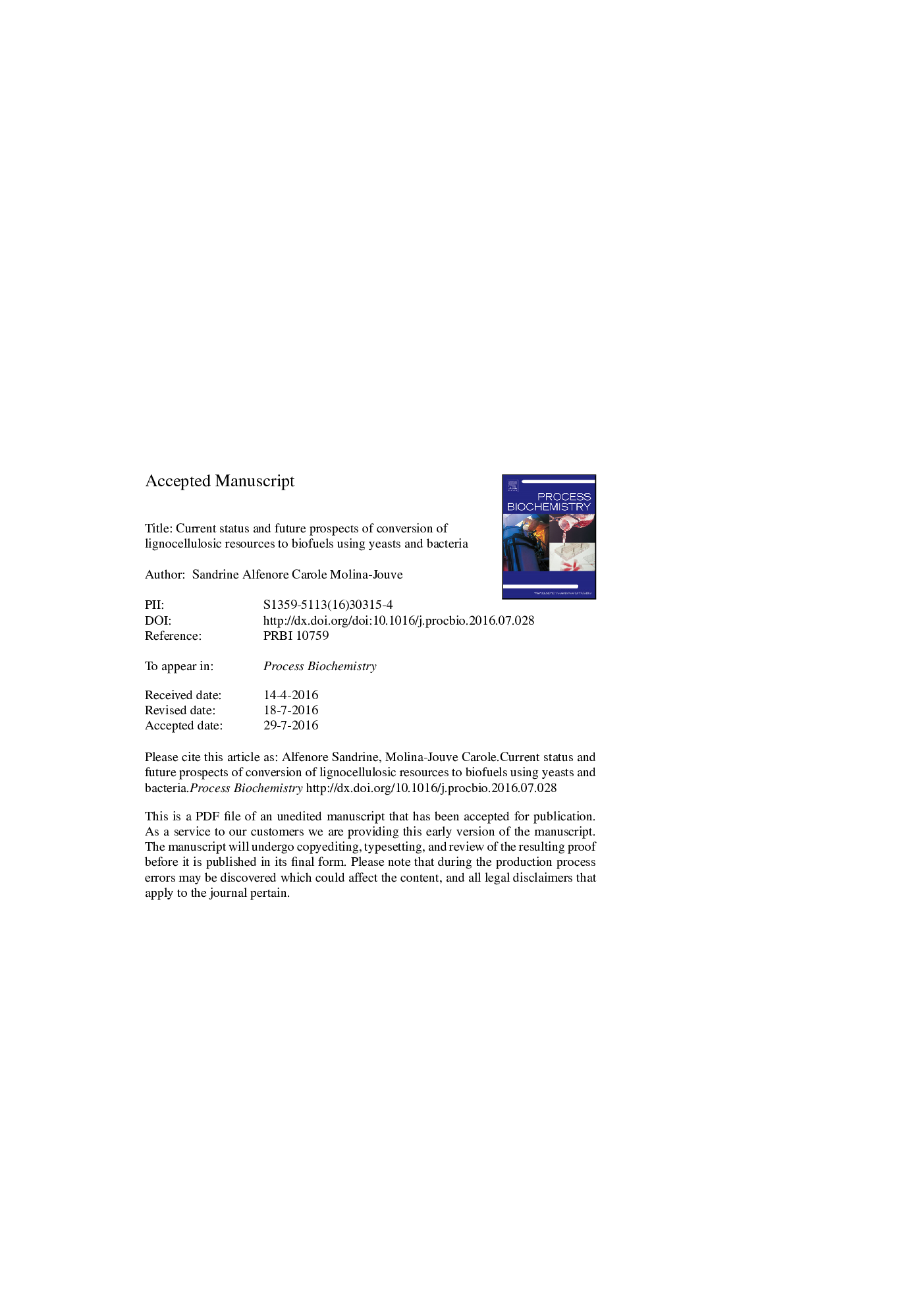| کد مقاله | کد نشریه | سال انتشار | مقاله انگلیسی | نسخه تمام متن |
|---|---|---|---|---|
| 4755150 | 1361510 | 2016 | 30 صفحه PDF | دانلود رایگان |
عنوان انگلیسی مقاله ISI
Current status and future prospects of conversion of lignocellulosic resources to biofuels using yeasts and bacteria
ترجمه فارسی عنوان
وضعیت فعلی و چشم انداز آینده تبدیل منابع لیگنوسلولز به سوخت های زیستی با استفاده از مخمرها و باکتری ها
دانلود مقاله + سفارش ترجمه
دانلود مقاله ISI انگلیسی
رایگان برای ایرانیان
کلمات کلیدی
زیست توده لیگنوسلولوزیک، پیشگیری هیدرولیزات، همگاز، سوخت های زیستی، مخمر، باکتری،
ترجمه چکیده
تولید انرژی زیستی چالش مهمی در کاهش اثرات زیست محیطی احتراق سوخت فسیلی و حفظ استقلال انرژی و انرژی است. این مطالعه بر تولید سوخت های زیستی از منابع لیگنوسلولز با عمل مخمر یا باکتری تمرکز دارد، در حالی که جلبک ها به عنوان منبع سوخت های زیستی حذف می شوند. اتانول، لیپید ها (به عنوان پیش سازهای سوخت بیودیزل و بیوگرافی) و هیدروژن در این مطالعه در نظر گرفته شده است. پیش پردازش های مختلف برای تبدیل لیگنوسلولز به منابع کربن مایع و گازاجرا برای تولید میکروبی سوخت های زیستی خلاصه شده و چشم انداز فعلی و آینده آنها مورد بحث قرار گرفته است. این مطالعه بر محدودیت های علمی و تکنولوژیکی تولید سوخت های زیستی از مواد زیرزمینی لیگنوسلولوزی با مقادیر کم کربن اولیه، تولید مهار کننده ها در طول پیش درمان، محدود کردن انتقال جرم گاز به مایع و به دست آوردن عملکرد پایین محصولات تبدیل شده از کربن است. مطالعات در حال پیشرفت هستند تا ترکیبی از گونه های جدید مهندسی شده با پروسس های بیولوژیکی مجتمع نوآورانه، که می تواند فرصت های جدید را باز کند. روش پالایشگاه به طور موثر کاربرد های شیمیایی با ارزش افزوده و کاربردهای پر انرژی را با بهینه سازی ارزش گذاری و بازیافت محصول کنار می گذارد. این روش می تواند حیات اقتصادی و محیط زیستی سوخت زیستی سوخت لیگنوسلولیز را تقویت کند.
موضوعات مرتبط
مهندسی و علوم پایه
مهندسی شیمی
بیو مهندسی (مهندسی زیستی)
چکیده انگلیسی
Generating bioenergy is a significant challenge in reducing the environmental impact of fossil fuel combustion and in sustaining energy and energy independence. This study focuses on the production of biofuel from lignocellulosic resources by the action of yeast or bacteria, whereas algae are excluded as a source of biofuels. Ethanol, lipids (as precursors to biodiesel and biojet fuel), and hydrogen are considered in this study. Different pretreatments for converting lignocellulose into liquid and gaseous carbon sources for the microbial production of biofuels are summarized, and their current and future prospects are discussed. This study highlights the scientific and technological limitations of producing biofuel from lignocellulosic substrates with low initial carbon content, generating inhibitors during pretreatments, limiting mass transfer of gas to liquid, and obtaining low yields of products converted from carbon. Studies are in progress to combine new engineered strains with innovative integrated bioprocesses, which can open up new opportunities. The refinery method effectively combines high-added-value chemical and energetic applications by optimizing by-product valorization and recycling. This method can reinforce both the economic and environmental viability of the lignocellulosic biofuel pathway.
ناشر
Database: Elsevier - ScienceDirect (ساینس دایرکت)
Journal: Process Biochemistry - Volume 51, Issue 11, November 2016, Pages 1747-1756
Journal: Process Biochemistry - Volume 51, Issue 11, November 2016, Pages 1747-1756
نویسندگان
Sandrine Alfenore, Carole Molina-Jouve,
